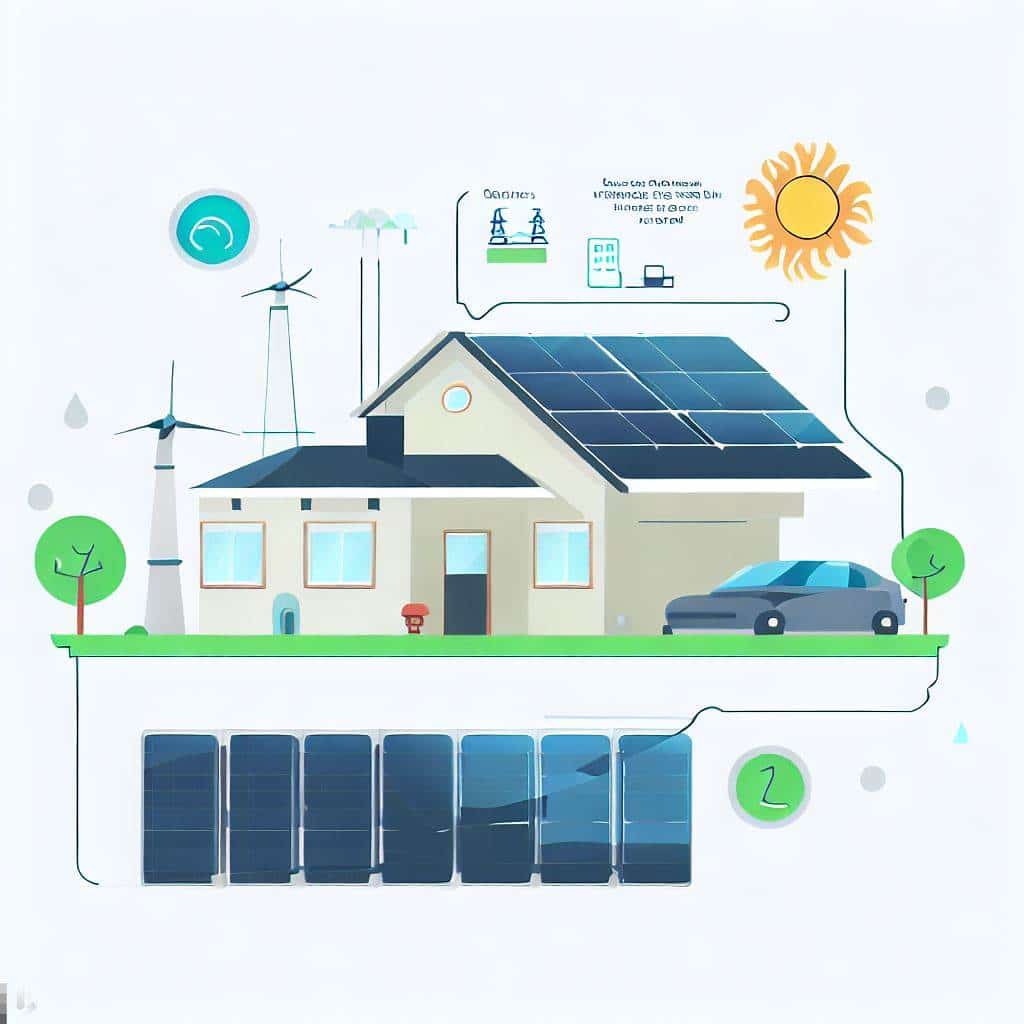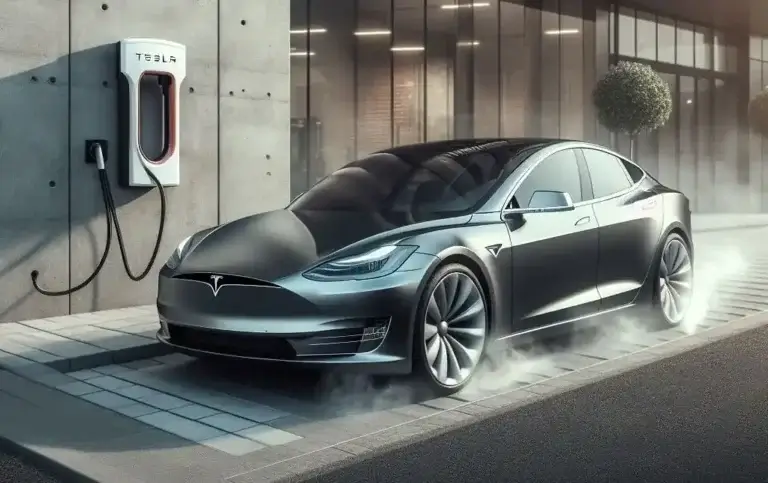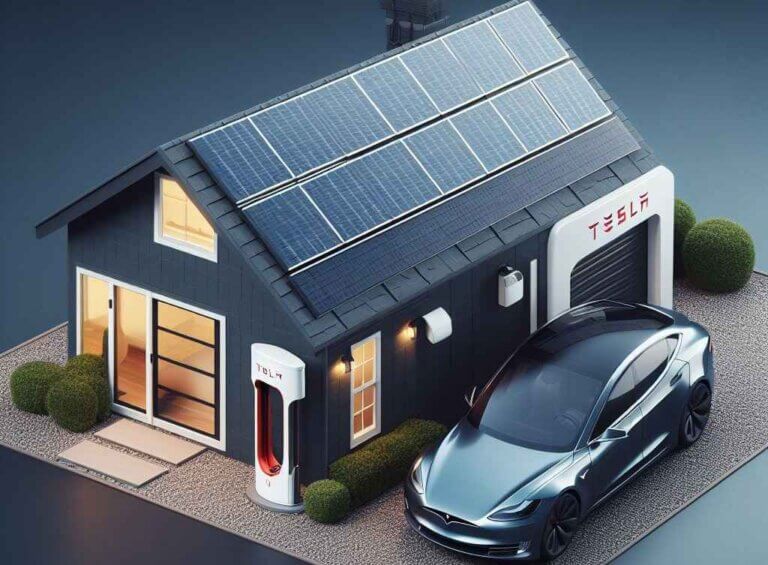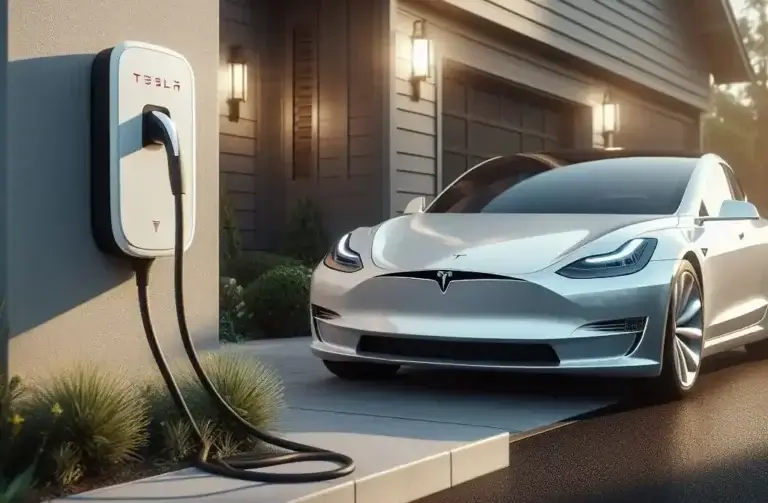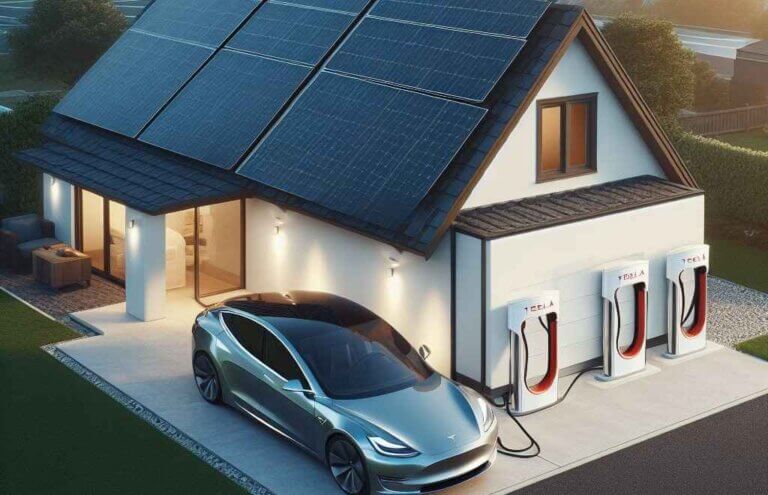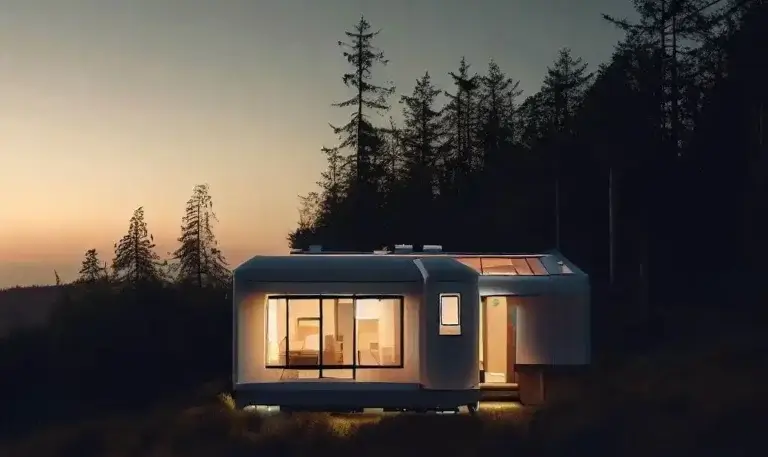Solar Panels With Tesla Battery Storage
Solar panels with Tesla battery storage systems is new talk in the town for futuristic and solar-powered home lovers. Solar panels generate energy in sunlight and store it in batteries for non-sun hours to power the house. This approach benefits the homeowner in many ways, from fewer carbon footprints to independence, less cost than grid electricity, and getting rid of heavy electricity bills.
Solar panels with Tesla battery systems are more interesting to talk about. Tesla is a market leader in everything from electric vehicles (EVs) to Tesla’s fully solar-powered sustainable homes. Using Tesla powerwall batteries for solar energy storage is thus the best option to power your appliances.
Solar Panels With Tesla Battery Storage can be the most suitable and more energy-efficient choice in many ways. Let’s dig into the many important related factors first.
Which Solar Panels Does Tesla Use?
Tesla does not build its solar panels. Instead, it collaborates with Q Cells, a major South Korean solar panel producer, to manufacture its solar panels. Q Cells solar panels are well-known for their excellent efficiency and long lifespan.
Tesla utilizes different solar panels depending on the location and size of the solar system. All Tesla solar panels, on the other hand, are monocrystalline, which means they are produced from a single crystal of silicon. Monocrystalline solar panels are the most efficient solar panels on the market.
Tesla solar panels come with an industry-standard 25-year guarantee. The warranty covers both the functionality of the solar panels and the installation’s craftsmanship.
Which Tesla Powerwall Battery Storage Do You Need?
The Tesla Powerwall 2 and Powerwall+ are the two current models of Tesla’s home battery storage system. They both have a storage capacity of 13.5 kWh, but the Powerwall+ has a higher power rating of 9.6 kW continuous and 22 kW peak, compared to the Powerwall 2’s 5.8 kW continuous and 10 kW peak. This means that the Powerwall+ can power more appliances during a power outage.
The Powerwall+ also has a few other features that the Powerwall 2 does not, such as:
- Integrated solar inverter: This allows the Powerwall+ to be connected directly to solar panels, without the need for a separate inverter.
- Revenue-grade metering: This allows the Powerwall+ to be used to participate in net metering programs.
- Direct solar integration: This allows the Powerwall+ to charge faster when solar panels are generating electricity.
So, which Tesla Powerwall do you need? It depends on your needs and budget. If you need a battery that can power a lot of appliances during a power outage, then the Powerwall+ is the better option. However, if you are on a budget, the Powerwall 2 is still a great option.
Here is a table that summarizes the key differences between the two models:
| Feature | Tesla Powerwall 2 | Tesla Powerwall+ |
|---|---|---|
| Storage capacity | 13.5 kWh | 13.5 kWh |
| Power rating | 5.8 kW continuous and 10 kW peak | 9.6 kW continuous and 22 kW peak |
| Integrated solar inverter | No | Yes |
| Revenue-grade metering | No | Yes |
| Direct solar integration | No | Yes |
| Price ( only ) | $9,200–$14,200 | $9,200–$14,200 |
Cost Of Solar Panels With Tesla Battery Storage
The cost of solar panels with Tesla battery storage varies according to the size of your solar system, the type of battery you select, and labor prices in your area. A comprehensive system, on the other hand, will cost between $25,000 and $50,000. After the final cost, there will be a 30% deduction due to Solar Tex Credit of America.
The cost breakdown is explained below
Solar panels: The cost of solar panels varies according to their size, efficiency, and quality. Solar panels can cost anywhere between $2,000 and $4,000 per kW.
Tesla Powerwall 2: Each Tesla Powerwall 2 costs $13,500. Your system will require at least one Powerwall, but you may require more depending on your requirements.
Installation: Installation charges will vary according to the intricacy of your system and labor expenses in your area. Solar panels can cost anywhere between $1,000 and $2,000 per kW.
An article about Cost to Install 240V Outlet for Tesla is also published.
After analyzing the Cost Of Solar Panels With Tesla Battery Storage, there are many queries to solve. Let’s begin to cover them all in this article.
Are Solar Panels Recyclable?
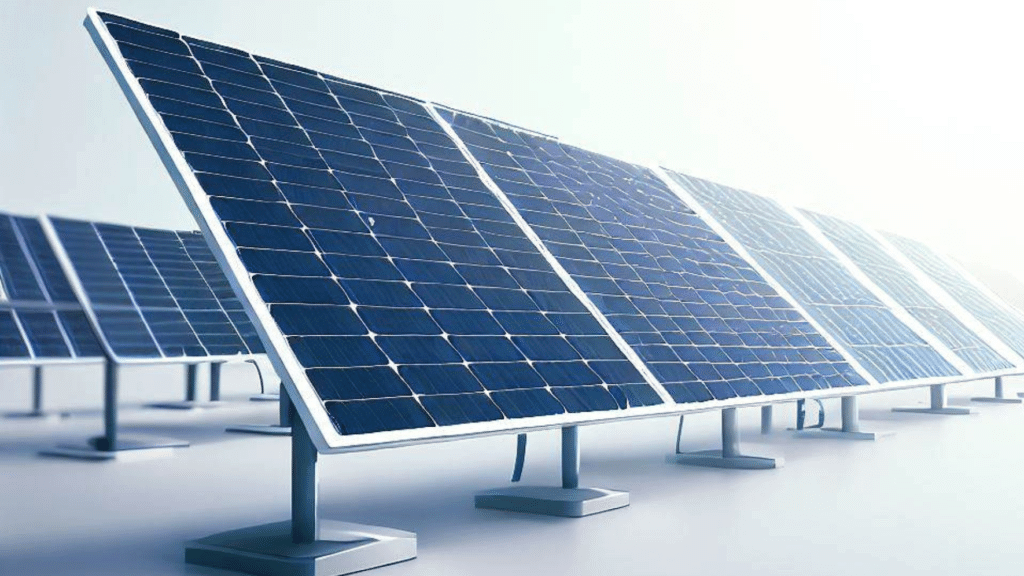
Yes, solar panels can be recycled. The main components of solar panels are glass, aluminum, silicon, and copper, all of which can be recycled.
Solar panel glass can be recycled into new glass items such as bottles and windows. Aluminum can be recycled to make new aluminum items like cans and foil. The silicon may be recycled and used to make new silicon goods like solar cells and computer processors. Copper may be recycled and used to make new copper goods like electrical wire and plumbing pipes.
Solar panel recycling is still a relatively new sector, but it is fast expanding. As more solar panels are deployed, the demand for recycling facilities will grow.
According to the US Environmental Protection Agency (EPA), about 85% of the materials in a solar panel can be recycled. The remaining 15% of the materials are either too difficult or too costly to recycle at this time.
Are Solar Panels Free?
There are no totally free solar panels in the United States. However, there is an option to help you in buying solar panels at lower prices.
Federal Solar Tax Credit: The federal solar tax credit provides a 30% tax credit on the cost of installing solar panels. This implies that you may deduct 30% of the cost of installing solar panels on your property from your federal income taxes. Both residential and business solar systems are eligible for the tax credit.
Are Solar Panels Bad For The Environment?
Solar panels are not harmful to the environment. They are a clean, renewable source of energy that emits no emissions. However, there are certain environmental consequences to the manufacture and disposal of solar panels.
The main environmental impacts of solar panels are:
- The mining of raw materials: The production of solar panels requires the mining of raw materials, such as silicon, copper, and aluminum. These mining activities can hurt the environment, such as water pollution and habitat destruction.
- The manufacturing process: The manufacturing process for solar panels also consumes energy and releases pollutants into the air and water. However, the environmental impact of the manufacturing process is getting smaller as solar panel technology improves.
- The disposal of solar panels: Solar panels are designed to last for 25 to 30 years, but they will eventually reach the end of their lifespan. When solar panels are disposed of, the toxic materials they contain can leach into the environment. However, there are now recycling programs available for solar panels, so most of the materials can be reused.
Overall, the environmental impacts of solar panels are relatively small compared to the environmental impacts of fossil fuels. Solar panels are a clean and renewable source of energy that can help reduce our reliance on fossil fuels and mitigate climate change.
Can Solar Panels Be Installed On A Metal Roof?
Yes, solar panels can be installed on a metal roof. In fact, metal roofs are one of the best roofing materials for solar panels. Metal roofs are strong and durable, and they can withstand the weight of the solar panels and the mounting system.
Tesla Battery Storage For Solar
Yes, Tesla battery storage can be used with solar panels. In fact, Tesla solar panels are designed to work seamlessly with Powerwall, and the two products can be bundled together for a single purchase and installation.
When solar panels generate electricity, it is first used to power your home. Any excess electricity is then stored in the Powerwall battery. At night or during a power outage, the Powerwall can then provide electricity to your home, keeping you running on clean, solar power.
The combination of solar panels and Powerwall can help you save money on your electricity bills, reduce your reliance on the grid, and increase your home’s energy independence.
Can Tesla Powerwall Batteries Be Replaced?
Yes, Tesla Powerwall batteries can be replaced. Tesla Powerwall batteries are designed to last for 10 years, but they can be replaced sooner if they become damaged or defective.
The cost of replacing a Tesla Powerwall battery will vary depending on the model of the battery and the cost of labor in your area. However, you can expect to pay anywhere from $5,000 to $10,000 for a new battery.
If your Tesla Powerwall battery needs to be replaced, you can contact Tesla for a quote. Tesla will send a technician to your home to remove the old battery and install the new one.
Tesla Battery Storage Capacity
The Tesla Powerwall 2 and Powerwall+ are the two current models of Tesla’s home battery storage system. They both have a storage capacity of 13.5 kWh, but the Powerwall+ has a higher power rating of 9.6 kW continuous and 22 kW peak, compared to the Powerwall 2’s 5.8 kW continuous and 10 kW peak. This means that the Powerwall+ can power more appliances during a power outage.
The Tesla Powerwall is a lithium-ion battery, which is the most efficient type of battery available. The Powerwall has an efficiency of 90%, which means that for every 100 kWh of energy that is stored in the battery, 90 kWh can be used.
The Powerwall is designed to last for 10 years, but it can last longer if it is properly maintained. The battery should be kept cool and dry, and it should not be subjected to extreme temperatures.
Frequently Asked Questions
What is the advantage of combining solar panels with Tesla battery storage?
Combining solar panels with Tesla battery storage provides tremendous benefits. It allows you to collect solar energy during the day, store it in the Tesla Powerwall battery, and utilize it at night or during power outages. This provides a consistent and dependable supply of renewable energy, decreasing your dependency on the grid.
What is the average lifespan of Tesla Powerwall batteries?
Tesla Powerwall batteries are made to last. Depending on the model, they often come with warranties ranging from 5 to 10 years. However, with appropriate maintenance and care, these batteries may typically last much beyond their guaranteed duration.
How does the installation of solar panels with Tesla battery storage impact my electricity costs?
Installing solar panels with Tesla battery storage can result in significant cost reductions over time. You may dramatically reduce your dependency on the grid by producing electricity from sunshine and storing extra energy, resulting in cheaper power bills and possibly financial incentives or rebates.
Can I sell excess electricity generated by my solar panels with Tesla battery storage back to the grid?
Yes, you may frequently sell extra power back to the grid through a practice known as net metering. When your solar panels produce more power than you consume, you may feed the excess back into the grid, earning you credits or reimbursement from your utility provider. Check with your local utility to determine whether this program is available.
What factors should I consider when choosing the size of my solar panel and Tesla battery storage system?
Consider your household’s energy use, your location’s solar potential, and your unique energy objectives when deciding the size of your solar panel and Tesla battery storage system. A competent installation can evaluate these elements and build a system that efficiently suits your demands.

